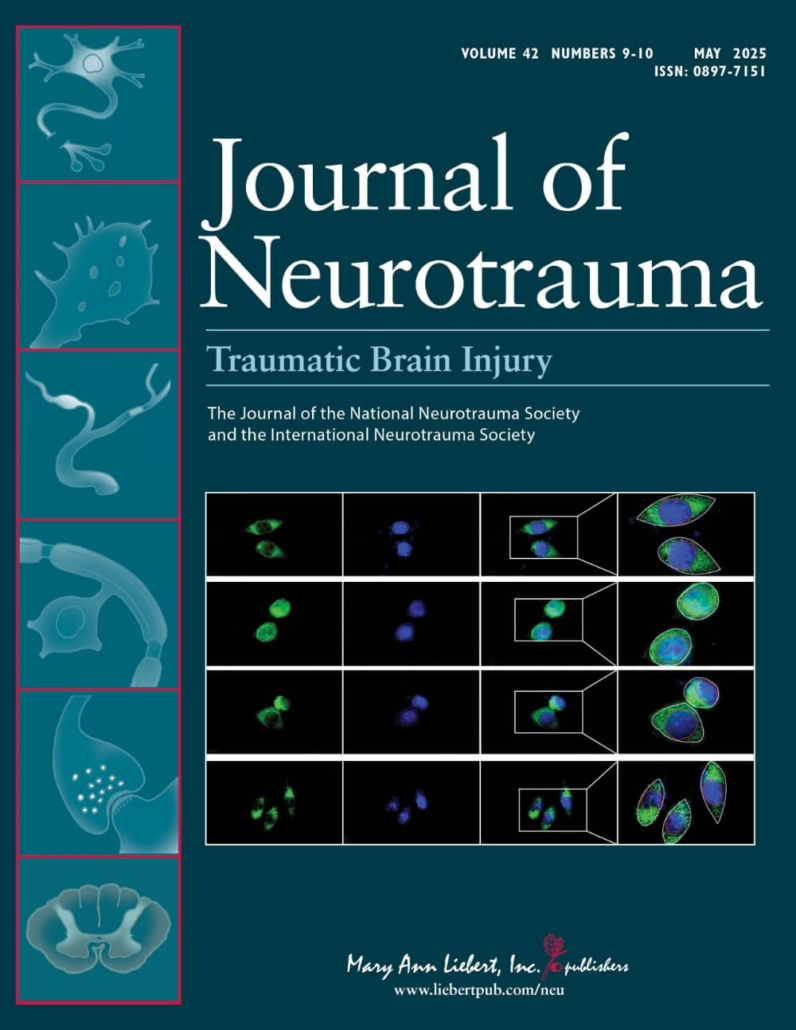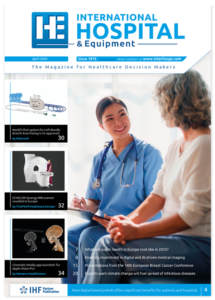New brain injury framework replaces outdated classification system, transforms diagnosis and treatment
A revolutionary multidimensional framework for characterising acute traumatic brain injury is set to replace the outdated Glasgow Coma Scale-based classification system. The new Clinical, Biomarker, Imaging-Modifiers (CBI-M) approach integrates blood biomarkers, advanced neuroimaging, and patient-specific factors to provide clinicians with unprecedented diagnostic precision for the first 24 hours post-injury.
The era of classifying traumatic brain injury (TBI) simply as “mild,” “moderate,” or “severe” is drawing to a close. A comprehensive initiative led by the US-based National Institute of Neurological Disorders and Stroke (NINDS) has culminated in a groundbreaking classification system that promises to transform how clinicians diagnose and manage acute brain injuries.
The new Characterization of Brain Injury with Modifiers (CBI-M) framework, detailed in a special issue of the Journal of Neurotrauma published online ahead of the print issue due out in July 2025, represents the collective expertise of 94 international experts from 14 countries who worked across six multidisciplinary working groups.
Beyond the Glasgow Coma Scale limitations
The current Glasgow Coma Scale (GCS) classification system, whilst valuable since its inception 50 years ago, has significant limitations in the precision medicine era. “No modern treatable condition is reduced to a nomenclature of ‘mild, moderate, severe,’ certainly none as complex and heterogenous as TBI,” note the researchers in their overview paper.
The CBI-M framework addresses these shortcomings through four integrated pillars: Clinical assessments including detailed GCS scoring and pupillary reactivity; blood-based biomarkers; neuroimaging findings; and outcome-modifying factors.
David Menon from the University of Cambridge, who led the clinical assessment working group, emphasised key changes to current practice: “The CSWG concluded that the Glasgow Coma Scale (GSC) remains central to TBI characterization, but must include detailed scoring of eye, verbal, and motor components, with identification of confounding factors and clear documentation of non-assessable components. Pupillary reactivity should be documented in all patients, but recorded separately from the GSC, rather than as an integrated GSC-Pupils score.”
Revolutionary blood biomarker integration
Perhaps the most clinically significant advancement comes from validated blood-based biomarkers that can now aid diagnosis within the crucial first 24 hours. Jeffrey Bazarian from the University of Rochester School of Medicine and Dentistry, who led the biomarker working group, reported compelling evidence for three key proteins.
“Current evidence supports the use of glial fibrillary acidic protein (GFAP), ubiquitin C-terminal hydrolase L1 (UCH-L1) and S100B calcium binding protein (S100B) to assist in re-classification of TBI at acute time points (0-24 hours) primarily in ED settings, while neurofilament light chain (NfL), GFAP and S100B have utility at subacute time point (1-30 days) in hospital and ICU settings,” Bazarian explained.
These biomarkers offer objective measures of brain injury severity that complement clinical assessment. The FDA-cleared GFAP and UCH-L1 combination test can predict the absence of traumatic intracranial injury on CT scans with sensitivities ranging from 0.957 to 1.00 and negative predictive values from 0.965 to 1.00, potentially reducing unnecessary neuroimaging by approximately one-third.
Enhanced imaging and modifier integration
The framework also incorporates advanced neuroimaging beyond standard CT scanning. The imaging working group identified specific pathoanatomical features that provide crucial diagnostic information, whilst the modifiers working group addressed psychological and environmental factors that influence clinical presentation and outcomes.
Mac Donald and colleagues from the imaging working group developed recommendations focusing on frontline clinicians, ensuring practical applicability across diverse healthcare settings. Meanwhile, the modifiers component recognises that patient-specific factors significantly impact both acute presentation and long-term outcomes.
Addressing retrospective diagnosis challenges
John Corrigan from The Ohio State University led efforts to improve retrospective TBI identification – a critical need given that many patients don’t present for acute evaluation. His working group examined five methodologies for identifying past TBIs: self/proxy-report, medical record extraction, imaging, fluid-based biomarkers, and performance-based biomarkers.
“Self/proxy-report is essential for clinical, research and surveillance applications, providing information that cannot be obtained via other methods,” Corrigan concluded, highlighting the importance of comprehensive history-taking in TBI assessment.
Implementation and future directions
The Knowledge to Practice Working Group, led by Peter Bragge from Monash University, conducted systematic prioritisation of implementation strategies. Their survey of researchers across all working groups identified 52 unique implementation actions, with top priorities including changes to GCS assessment protocols and development of measurement tools for psychological and environmental factors.
The initiative addresses recommendations from the 2022 National Academies of Science, Engineering and Medicine report “Traumatic Brain Injury: A Roadmap for Accelerating Progress,” which called for improved classification systems to accelerate therapeutic development.
Clinical impact and transformation
This comprehensive approach marks a paradigm shift towards precision medicine in TBI care. Rather than relying on a single assessment tool, clinicians will have access to a multidimensional characterisation system that provides a more distinct understanding of brain injury complexity.
The CBI-M framework promises to enhance diagnostic accuracy, improve prognostic capabilities, and facilitate more targeted therapeutic interventions. For emergency departments managing the majority of TBI cases, the integration of rapid biomarker testing with refined clinical assessment could significantly improve patient triage and treatment decisions.
As implementation begins, this revolutionary framework represents the most significant advancement in TBI classification since the original development of the Glasgow Coma Scale, offering clinicians the precision tools necessary for optimal patient care in the modern era.
References
- Bazarian, J. J., Zetterberg, H., Buki, A., Dengler, B. A., Diaz-Arrastia, R., Korley, F. K., … & Manley, G. T. (2025). Blood-based biomarkers for improved characterization of traumatic brain injury: Recommendations from the 2024 National Institute for Neurological Disorders and Stroke Traumatic Brain Injury Classification and Nomenclature Initiative Blood-Based Biomarkers Working Group. Journal of Neurotrauma. Ahead of Print. doi: https://doi.org/1089/neu.2024.0581
- Bragge, P., McNett, M., Bayley, M., Dobbins, M., Nakase-Richardson, R., Peek-Asa, C., … & Manley, G. (2025). Starting with the end in mind: Recommendations to optimize implementation of a novel TBI classification from the 2024 NINDS TBI Classification and Nomenclature Workshop’s Knowledge to Practice Working Group. Journal of Neurotrauma, Ahead of Print. doi: https://doi.org/1089/neu.2024.0576
- Corrigan, J. D., Alosco, M. L., van der Naalt, J., Adams, R. S., Asken, B. M., Hinds, S., … & Manley, G. T. (2025). Retrospective identification and characterization of traumatic brain injury—Recommendations from the 2024 National Institute of Neurological Disorders and Stroke Traumatic Brain Injury Classification and Nomenclature Initiative Retrospective Classification Working Group. Journal of Neurotrauma, Ahead of Print. doi: https://doi.org/1089/neu.2024.0590
- Mac Donald, C. L., et al. (2025). Neuroimaging characterization of acute traumatic brain injury with focus on frontline clinicians: Recommendations from the 2024 National Institute of Neurological Disorders and Stroke Traumatic Brain Injury Classification and Nomenclature Initiative Imaging Working Group. Journal of Neurotrauma, Ahead of Print. doi: https://doi.org/1089/neu.2025.0079
- Manley, G. T., Dams-O’Connor, K., Awwad, H. O., Doperalski, A., Umoh, N., Maas, A. I. R., & McCrea, M. A. (2025). Marking a new age in characterization of acute traumatic brain injury: The National Institute of Neurological Disorders and Stroke Traumatic Brain Injury Classification and Nomenclature Initiative. Journal of Neurotrauma, Ahead of Print. doi: https://doi.org/1089/neu.2025.0134
- Menon, D. K., et al. (2025). Clinical assessment on days 1–14 for the characterization of traumatic brain injury: Recommendations from the 2024 NINDS Traumatic Brain Injury Classification and Nomenclature Initiative Clinical/Symptoms Working Group. Journal of Neurotrauma, Ahead of Print. doi: https://doi.org/1089/neu.2024.0577


